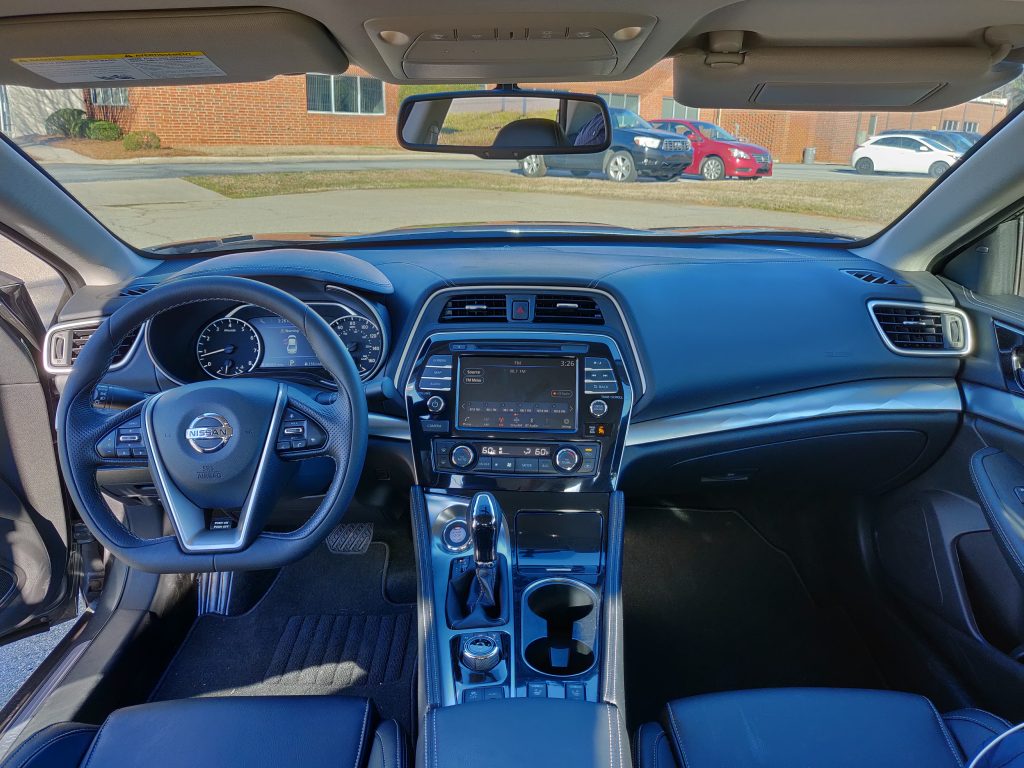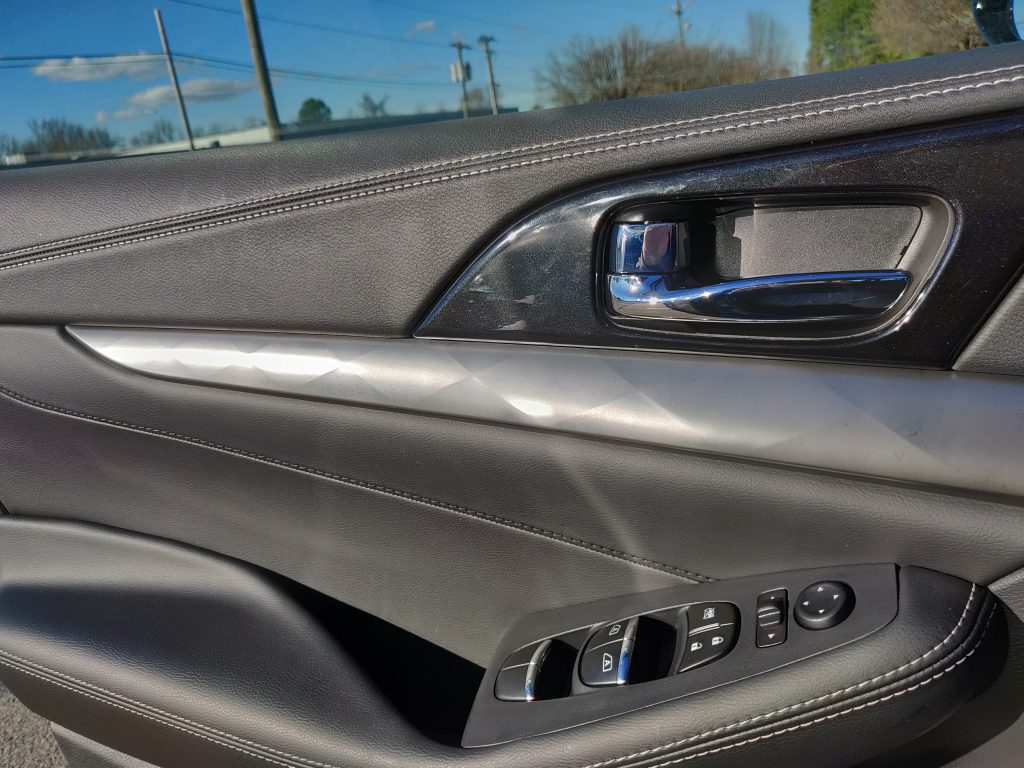Rental Car Review: 2019 Nissan Maxima SV
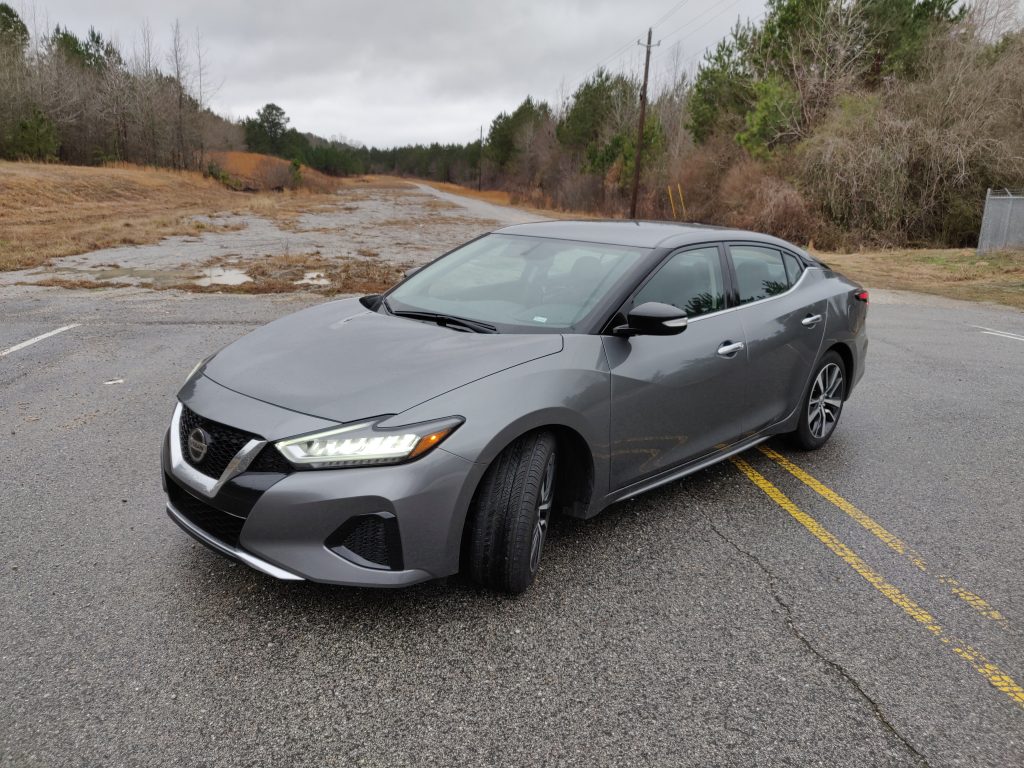
Decisions, decisions.
In another one of those cases in which, due to scheduling, I had to make a last-minute change to my reservation and pick up a car at my local airport instead of a small suburban location, I was presented with a difficult choice: Chrysler 300, Chevy Impala, or Nissan Maxima. Three of my favourite rental cars for eating up miles of the stupid-slab, which I would be doing this week with a trip to central North Carolina, back to Atlanta, then over to near Tupelo and back to Atlanta, which would add up to somewhere north of twenty hours in the car before I turned it in. All three of these cars have earned my respect and admiration for not only being pleasurable to drive, but also for being really comfortable and ergonomically compatible with my obnoxiously big-and-tall physique. I was really in a dither about it and almost went with the 300, knowing that its days in production were numbered, but the little voice in my head said get the Maxima. Maybe that voice knew that I’ve been meaning to write one of these reviews on it, or maybe it knew that the current generation of Maxima is surprisingly quick and fun for what externally appears to be an average Asian sedan. In any case, I knew that I’d enjoy the ride.
The Maxima has a long history of being a satisfying car, often with a sporty edge. It traces its lineage all the way back to the Nissan Bluebird, known on US shores as the Datsun 510, which closely copied a lot of the chassis and powertrain details of the BMW 1600/2000 models. The 510 earned a reputation for excellent handling and better overall performance than would be expected from a low-priced Japanese sedan. I can personally attest to this as I had a 510 when I was in the 12th grade and it was fun enough that I still miss it. In the ’70s the focus got diluted with the successor 710, but then the 810 upped the game with a 6-cylinder engine, was renamed Maxima a year later, and has moved in more of a performance direction ever since. This latest Maxima is no exception, and it continues in the sport-sedan tradition established by Maximae of the past. It offers enjoyable road-handling and plenty of power in a refined package. The one in which I spent the week was the SV trim level, with a starting MSRP of $35,960.
I’m always struck in the Maxima at how the driver seat area feels long, narrow, and low, and I don’t mean any of that in a bad way. The seat can be adjusted farther back than I need, low enough for me to wear a hat, and the center console is rather high and close, although for me it was a bit too close- but more regular-sized people won’t have an issue with it, although those who do may find the console in the 2018 model a bit less intrusive. It’s a good fit, and I rarely need to shift my position in the seat to stay comfortable for the long haul. I can stretch out my legs past the pedals and there’s plenty of room before my left foots hits the wheel well. The seat itself is supportive, bolstered just right for my build, and has all-electric adjustments for fore/aft, seatback angle, and lumbar support. The seats are heated too, controlled by chunky rocker-switches in the center console. There are only two settings, and I found that the heat left a little to be desired. Even in the high setting, the heat was not as quick or as thorough as what I’ve come to expect from the seat heat in my five-year-old Mazda 3, and it seemed to be stronger in the backrest than in the bottom cushion.
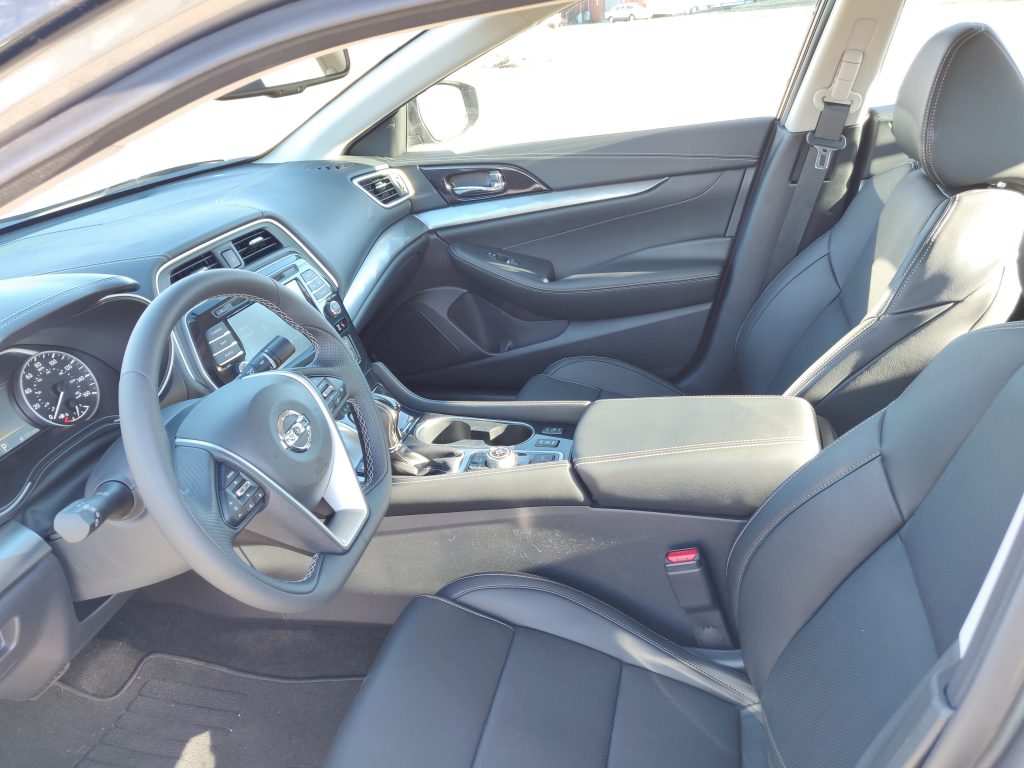
The steering wheel is adjustable in tilt and telescope, and is quite comfortable to my hands. I’m not generally a fan of flat-bottomed steering wheels, as I think that they are one of the ultimate elements of boy-racer poseurism in road cars, and the one in the Maxima doesn’t remove much clearance from the bottom of the wheel to make legroom- and it doesn’t need to. But what it does do is make gripping the lower quadrants comfy, as it makes a little more room for your hands.
The rear seat is tight for a large person such as myself, and just plain lacks the headroom for the unusually tall. As in many cars, if the driver seat is far enough back to accommodate someone my size, legroom behind it isn’t great. The cargo space is roomy and the opening is large enough to allow bulky items in and out with ease, and there is a cargo-net that can be secured across the lower part of the opening.
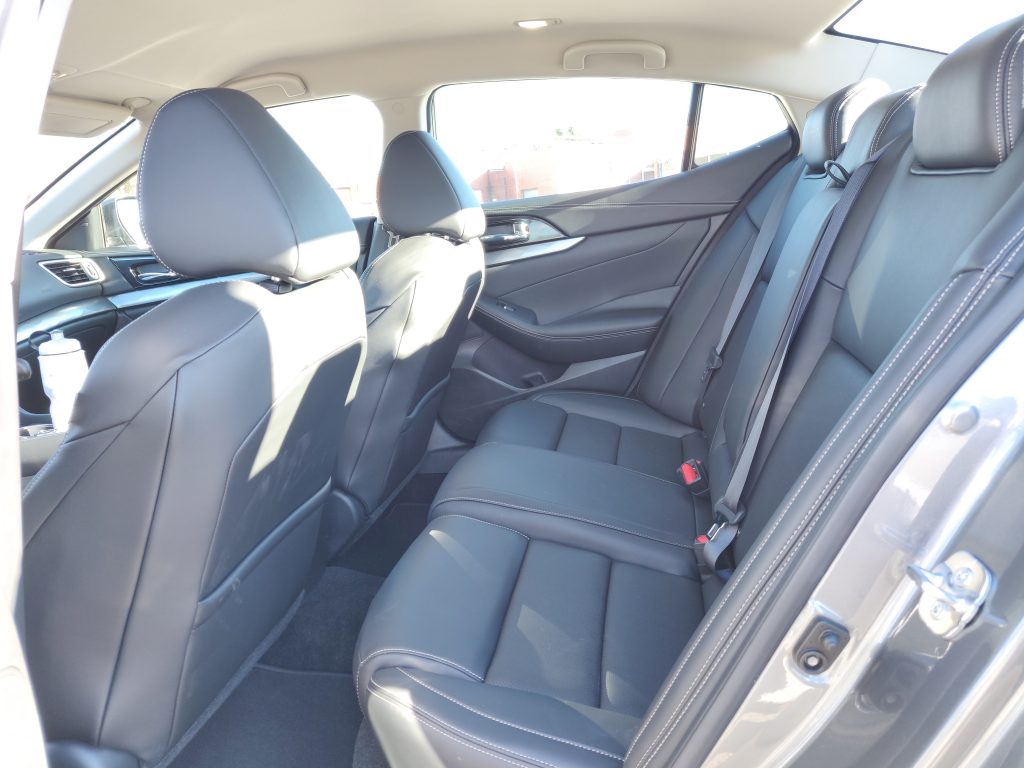
The engine is a 3.5-litre, 24-valve V6 with continuously variable valve timing, and Nissan claim 300 horsepower and 261 lb-ft of torque. It’s a peppy engine, lots of fun, and the continuously variable transmission does a good job of delivering power when you want it. Punch it and it goes- highway passes are easy and quick, although if you punch it hard enough you will get some initial torque-steer that will need minding, though not as bad as what you get with the Chevy Impala. Let me be clear here, this car is fun to put your right foot into and it goes with enough enthusiasm to make you want to put your foot into it. Be careful with it if you want to keep points off your license. The acoustic engineers did a good job too, giving the engine a nice growl under high power but quiet the rest of the time. Combine the eagerness of the acceleration with that growl, and you’ll enjoy every torque-steering moment of zipping down those on-ramps.
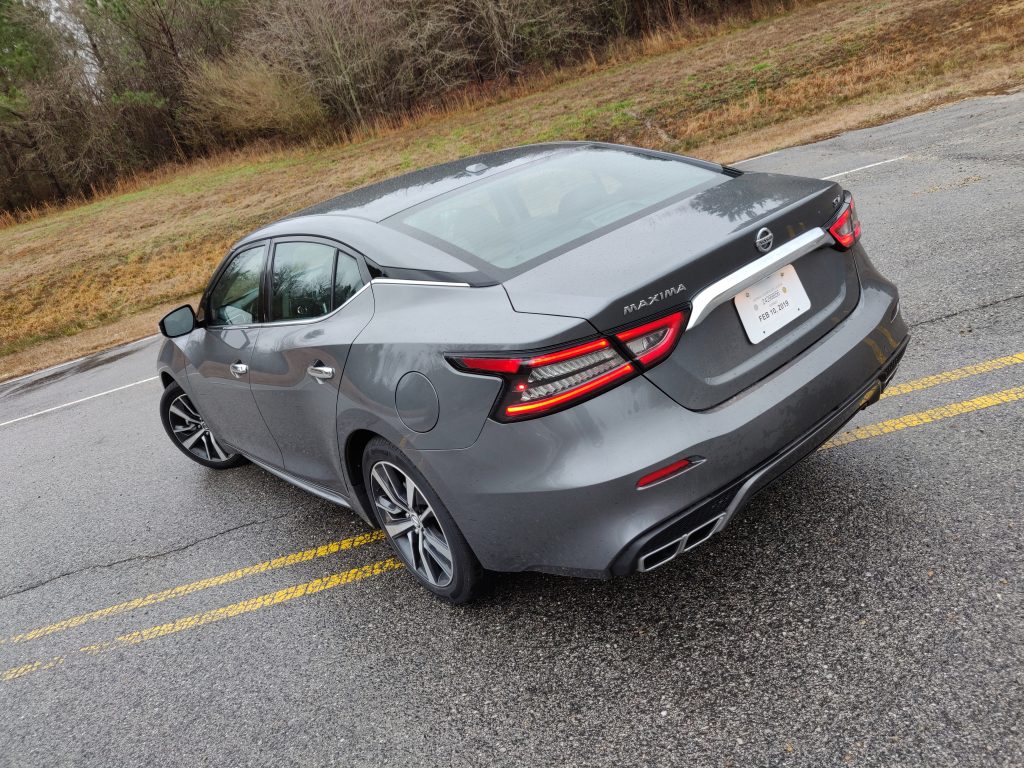
The transmission is a continuously-variable type that is a definite step forward over CVTs of the past. No high-rpm buzziness, and most of the time it acts like a conventional automatic, with discernible shift-points that are especially apparent during hard acceleration, and the aforementioned toque-steer can appear during the first two or three shifts during a good highway pass. There is also a sport-mode, selectable by a button in the center console. As with the sport-modes found in many other cars, this one raises the RPM points at which the transmissions shifts ratios, which makes acceleration more exciting. The downside of all the fun from the engine and transmission is low MPG. Nissan claims 20 city/30 highway, and of course it will be less if you enjoy the power too much. Another downside of this transmission is that in reverse the throttle becomes much less sensitive, which sounds like a good thing in theory but in practise it isn’t. Tickle the pedal a little to make a nice smooth backing maneuver and the car hesitates enough to make you wonder if it’s asking you, “you’re not serious about that, are you?” And backing uphill requires a large amount of right foot and enough revs to make you reconsider about backing uphill, despite how little work actually gets done.
The brakes are excellent- vented discs all around with electronic brakeforce distribution, and they do a great and unobtrusive job of eliminating speed. The 245/45-18 Continental tires are good and grippy, up to the task of keeping the Maxima’s 3565-lb curb weight planted. The car doesn’t feel that heavy in the twisties and is delightfully easy to put through the handing test.
The controls give you some options. As in pretty much every car these days, there is a touchscreen that controls audio, climate, vehicle settings and other things, and there is also a knob in the center console that can be used to control many of these functions as well. There is also the usual assortment of buttons on the steering wheel, controlling everything from radio volume to cruise control, and buttons for scrolling through the various screens that can be displayed between the speedometer and tachometer. This too seems to have become a standard arrangement for cars of our present era. The screen also of course displays what the rearview camera sees when the transmission is in reverse, but the camera lens is not well shielded from rain and the rearview image can be almost useless on rainy nights.
The cruise control is what Nissan calls Intelligent Cruise Control, which is of the type that adjusts for following distances. There are three levels of sensitivity, however the system defaults to the most sensitive level -which results in the greatest following distance- every time the car is switched on. If you prefer a different level, you must select this every time you get behind the wheel, and there is a button on the steering wheel just for this function. The cruise control also must be turned on for each drive in which you wish to use it, but that’s typical for most cars today. By comparison, the Chevy Impala’s cruise control remembers if you left it on- really convenient if you’re not fond of button-pushing. So how well does it work? Like all distance-sensing cruise controls I’ve used, it does the job of maintaining the distance quite well, but it lacks smoothness when the set distance is reached. The engine’s RPM can drop away rather suddenly, and if need be, the brakes engage to keep the following distance from going below the set amount. This can make for some abrupt surprise-decelerations, and the system is capable of bringing the car to a complete stop if the car in front of you stops, as I nervously learned while covering the pedal but resisting the urge to step on it. Please note, this automatic braking does NOT work when the cruise control is not engaged. Also, the cruise control will not engage if the radar antenna that senses following distance is obscured, the warning light and message for which came up several times while driving the Interstate in heavy rain. It will also dis-engage if the drive wheels lose traction, also learned in the deluge I experienced crossing Alabama.
So how did my Maxima do during the week’s travels? It did an impressive job of getting my butt down the road. Due to a mix-up with one customer’s information, I wound up making the trip to Mississippi unnecessarily, then going back to North Carolina the following day- so I ended up putting almost 2000 miles on the car in four days. The Maxima kept on trucking, eating up the miles and keeping me comfortable. The heavy rain mentioned above was rarely ever a problem and the car remained as well-mannered in the wet as in the dry. With excellent ergonomics, I did not find long hours behind the wheel to be noticeably fatiguing. The climate control kept me as comfortable as the seat did, and the performance-flavour of the car didn’t become obnoxious during long highway hours. The Maxima is easy to drive, easy to park, swallows a lot of luggage, and provides lots of grins in the curves as well as the straights, and it’ll keep you in comfort while it does. If you think the Maxima sounds like your kind of fun, go ahead and give it a look.
